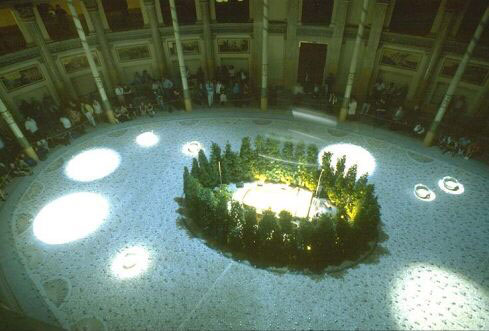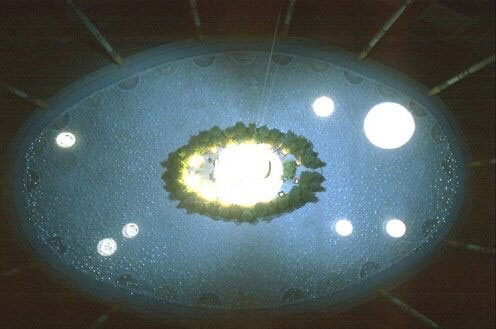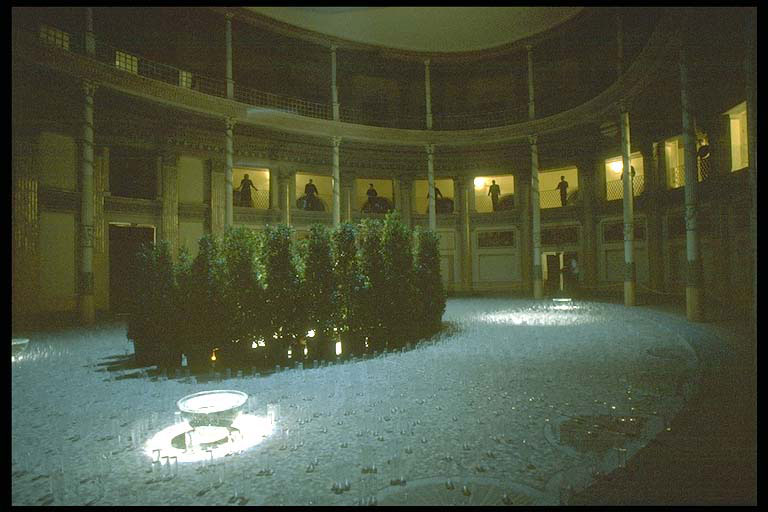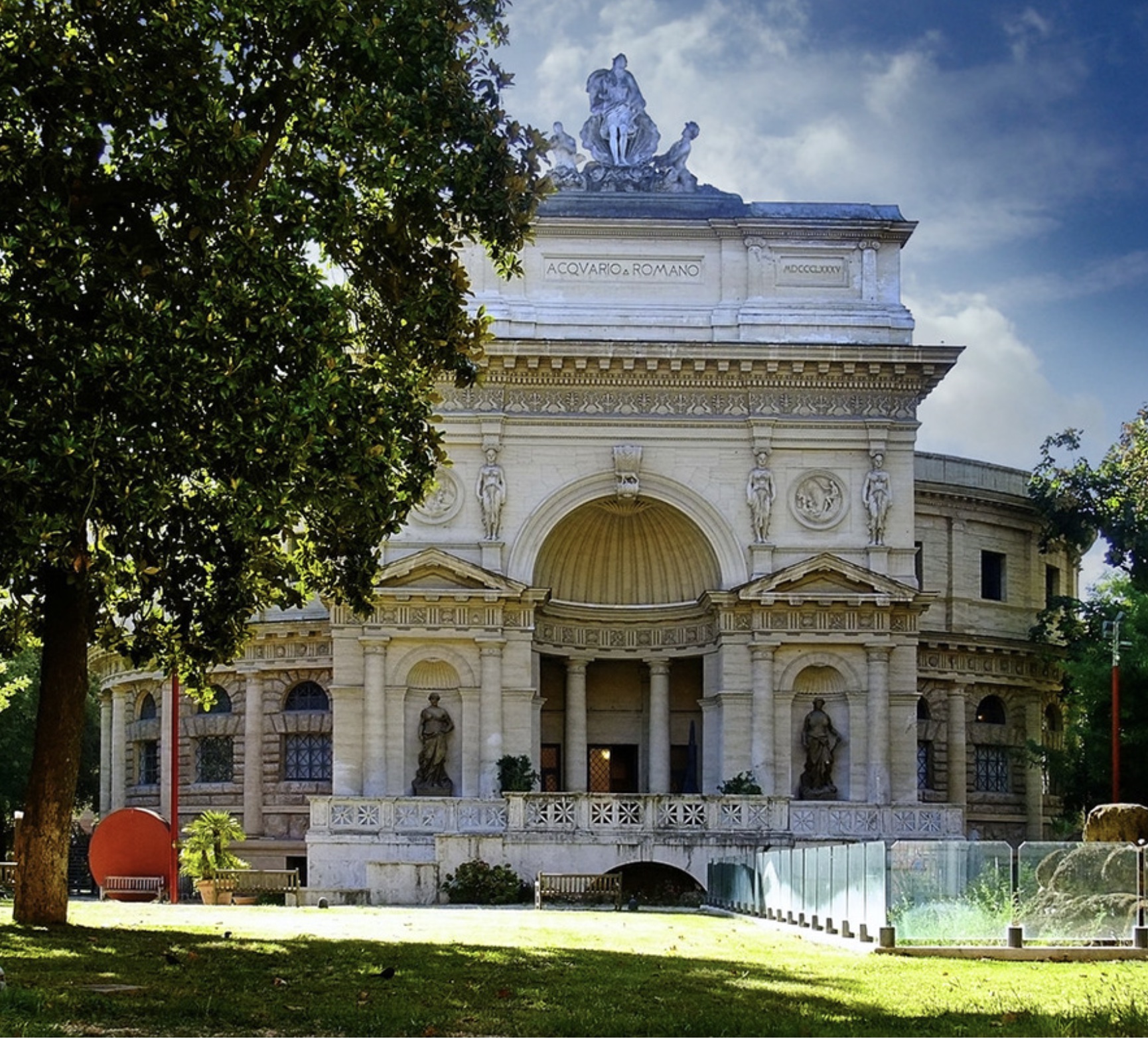View More
ELLIPSIS, 1995 Acquario Romano, Rome, Italy In collaboration with artists Andrew Ginzel and Kristen Jones. On June 21 from sunset to midnight with Edmund Campion performing with a 23 voice choir continually the piece Ellipsis embodied a meditation on the inevitable passage of time. The building, an architectural folly, was the inspiration for the work. Volunteer workers from Cinecitta helped install the building. Ellipsis was a public event for the Summer Solstice featuring an installation with visual elements and music at the Acquario Romano, dedicated to the City of Rome by collaborative artist team Kristin Jones and Andrew Ginzel (then fellows at the American Academy in Rome) and composer/performer Edmund Campion (also a fellow at the AAR at the time). The audience was invited to experience the continuous work at any time between sunset and midnight and it is estimated that around 1000 people were able to attend the event and take a walk in sound park. A large grand piano, concealed within an intimate forest of laurel trees, stood at the center of the large elliptical space. A constellation of 4,000 water-filled glasses surrounded the piano, covering the ground floor like the reflection of stars in a lake. Twenty-three singers stood evenly spaced around the first balcony, lit in silhouette by a light slowly orbiting behind them. Each held a small strobe light, which they triggered to spark at random intervals throughout the evening’s event. Composer Edmund Campion began playing the world premiere of a new solo piano work written for the occasion at exactly the moment of sunset in Rome (21:36.) The music was composed in several highly virtuosic toccatas punctuated by fantasy interludes that incorporated the voices of the New Chamber Singers, directed by Keith Griggs. Intermittent visual elements punctuated and augmented the evolving sequences, animating the space. Small black stones fell into a brightly lit mound of white powder at even intervals, causing small explosions of dust in the light. A spherical armature revolved in the air above the grand piano. The audience itself was in constant motion, strolling in one direction and observing the work from around the elliptical balcony above and from the floor beneath.
Sponsored by: Commune di Roma American Academy in Rome
Dimensions: H 70' x W. 45' x D. 135' (21.3 x 13.7 x 41.1 m.)
Elements: 4,000 water filled glasses
Hemispherical vessels
Bay laurel trees
Circumnavigating solar light
Mirrors
Aluminum sphere
Talc and Stones
Photographic flashes
Incandescent and natural light
Grand piano
23 member chorus
Composer Edmund Campion began playing the continuous music composed especially for this occasion exactly at the moment of sunset in Rome (21:36). The music consists of several highly virtuostic toccatas punctuated by fantasy interludes that included the participation of The New Chamber Singers directed by Keith Griggs. The audience was welcomed to experience the continuous work at any time during the 2 hour and 24 minute duration.
The musical score was accompanied by intermittent visual elements that punctuated and animated the space. The piano, at the center, was concealed within a forest of vegetation, surrounded by constellations of water filled vessels. A glow of light circumnavigated an orbiting globe. Other occurrences, such as photo flashes were be triggered by the piano and chorus .
The work is a meditation on the inevitable evolution of time. The work surged, swelled and cycled. The acoustics of the Acquario Romano served to further extend the vaporous sound. The choir defines moments in time within the piano’s continuum, acting to amplify to magnify the syntax in what appears to be a randomness. Visual elements marked, divided, punctuated and augmented the evolving sequences. Black stones falling into fine powder accumulated at even intervals. The audience was in motion, observing the work from all sides from the elliptical balcony above as well as from the corridor on the ground floor.
2001 ELLIPSIS II was released on the CD to accompany the exhibition organized by P.S1 Contemporary Art Center July 2-November 19,2000 and at the Henry Art Gallery at the University of Washington, July 2001.











